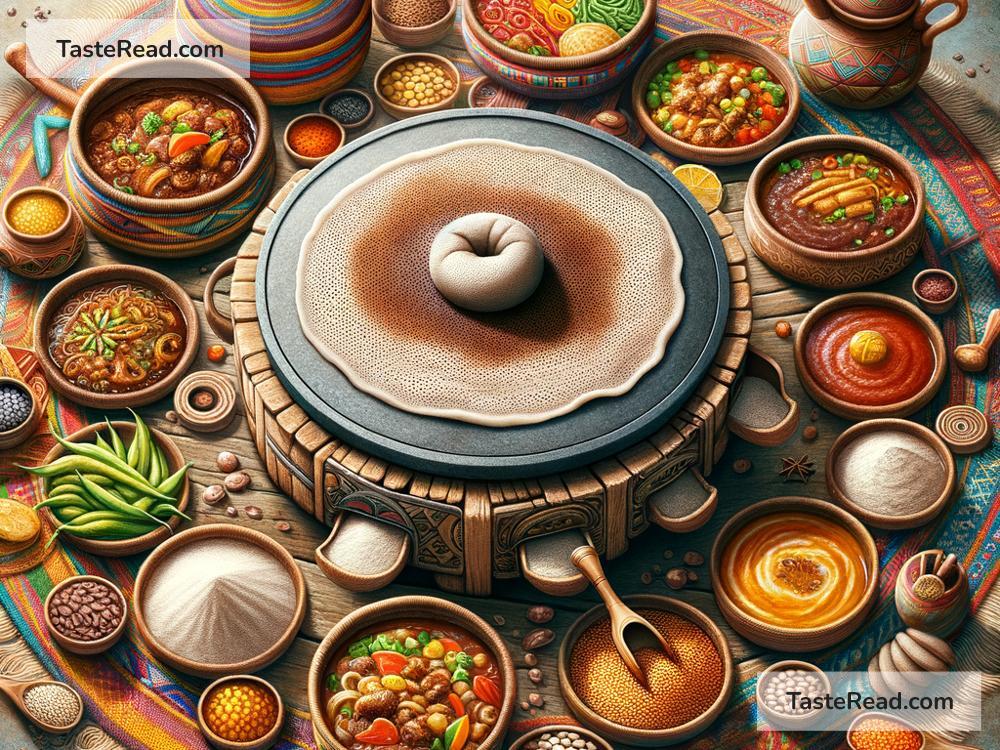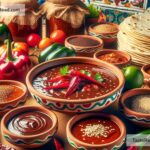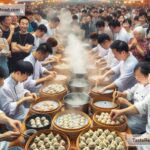Journeying Through Generational Recipes of Traditional Ethiopian Injera
Food is much more than something we eat—it is a connection to culture, history, and family. One dish that perfectly reflects this connection is Ethiopian injera. Injera is a soft, spongy, sourdough flatbread, and it’s a staple food in Ethiopia. For many Ethiopians, injera is not just food but a symbol of home, comfort, and tradition. It is made using recipes passed down from generation to generation, each family adding its own unique touch.
Join us on a journey to explore the history of injera, the process of making it, and why it continues to hold such a special place in the hearts of people across Ethiopia and beyond.
What Is Injera?
Injera is easy to recognize because of its distinct look and taste. It is light brown with a spongy texture filled with tiny air bubbles. It’s served like a plate, with flavorful Ethiopian dishes layered on top. You don’t use utensils to eat injera—instead, you tear off pieces and scoop up the delicious stews, vegetables, and meats.
What makes injera truly unique is the sour flavor, which comes from the fermentation process during preparation. The main ingredient in injera is teff flour, which is made from teff, an ancient grain grown primarily in Ethiopia. Teff is rich in nutrients like fiber, iron, and protein, making injera not only tasty but also healthy.
A Recipe Passed Down Through Generations
Making injera is an art. It’s not something you master in a short time; it takes practice, patience, and an experienced teacher—often a parent or grandparent. Many Ethiopian families cherish their injera recipes as part of their household traditions.
The recipe is quite simple, but the method requires skill. Traditionally, teff flour is mixed with water and left to ferment for a few days. This is the step that gives injera its sour flavor. The fermented batter is poured onto a large, flat griddle called a mitad. Cooking injera is a bit like cooking pancakes, but it is thinner, larger, and cooked only on one side.
Timing is everything. Pour the batter too quickly, and the texture could end up wrong. Too slowly, and the batter could stick to the griddle. The cook waits until the bubbles form and the edges of the injera lift slightly—signs it is ready. When done well, the injera is soft and stretchy, perfect for scooping up Ethiopian dishes.
The Role of Injera in Ethiopian Culture
Injera is much more than a meal—it is a centerpiece of Ethiopian social life and traditions. Almost every dish in Ethiopian cuisine is served with injera, and it acts like both a plate and an utensil. During meals, injera brings people together. Families and friends gather around a large communal platter, eating from the same plate, which symbolizes unity and connection.
One common dish served with injera is doro wat (spicy chicken stew) or shiro (a rich chickpea stew). Whether it’s a celebration, a wedding, or an everyday family dinner, injera is always there. It carries memories of family gatherings and shared stories.
In rural areas, injera-making becomes a communal activity, where women gather to cook and share techniques. They pass on their experience to younger generations, teaching them how to handle the batter, master the cooking process, and maintain the family’s unique recipe.
The Challenges of Modern Injera-Making
While injera remains deeply traditional, the way it is made has evolved. In urban areas, modern techniques and tools have helped make injera preparation more convenient. For example, electric stoves replace traditional mitads, and teff flour is often mixed with other grains, such as barley or rice, to make the process faster and cheaper.
However, one challenge is the rising cost of teff. Since teff is grown mainly in Ethiopia, it can be expensive, especially for families living outside the country. Many Ethiopian immigrants living in Europe or America have adapted by using alternative flours or buying pre-made injera from Ethiopian markets.
Despite these changes, the essence of injera remains the same. It’s still a way of connecting with Ethiopian heritage, no matter where you are. Families continue to pass their injera recipes down, preserving the love and tradition wrapped within this dish.
Why Injera Still Matters
Injera is more than just a bread; it’s a cultural treasure. Every bite tells a story—of ancestors farming teff fields, of grandmothers pouring batter onto a hot griddle, and of families gathered around communal plates. It connects people to their roots while also bringing comfort to their daily lives.
Whether you’re eating injera in Ethiopia or at an Ethiopian restaurant halfway across the world, you are part of a tradition that spans generations. It’s a reminder that food can bridge gaps between cultures and time periods.
So, the next time you eat injera, take a moment to appreciate the journey behind it—the care, the skill, and the love passed down through generations. It’s more than just a meal; it’s a taste of history and family.
Conclusion
Injera is a simple yet extraordinary bread that carries the soul of Ethiopian cuisine. Through generations, people have kept its traditions alive, teaching its recipes and passing on its cultural importance. Though modern challenges have changed parts of the process, injera remains a symbol of connection and community.
As you journey through the stories of injera, you’ll find that food is not just nourishment; it’s also identity, memory, and love. And that makes injera so much more than just bread—it’s a culinary tradition worth celebrating.


